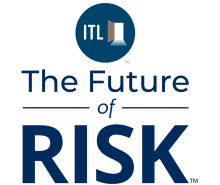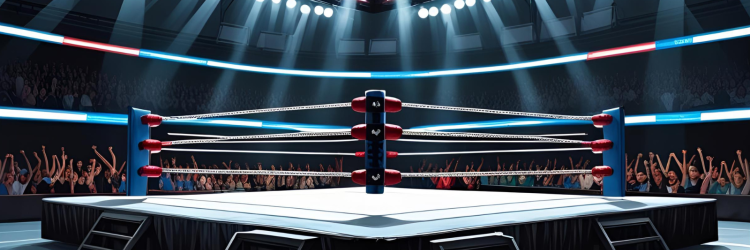Amid all the stories about the death last week of Hulk Hogan, one point is overlooked: the impact he had in getting companies to break out of the straight-laced marketing of the 1980s and see the potential for offbeat characters, even including antiheroes.
For insurers, I don't think it's a stretch to say Hogan was the father of Mayhem and perhaps the godfather of oddball advertising icons such as Flo, the gecko and the emu.
I say this both as an observer of insurance and as something of a student of pro wrestling. For a front page article in the Wall Street Journal, I attended a school for pro wrestlers in 1989 and wrestled a match on cable-TV, and the experience left a mark on my curiosity, as well as on my vertebrae and ribs.
But Hogan didn't just show the value of creative branding; he also showed how important it is to always protect the brand and how quickly you can lose your following.
Here is what a State Farm commercial looked like in 1988, after Hulkmania had begun but before it spread broadly beyond the world of pro wrestling. The ad was earnest and straightforward, seemingly based on real people.
I won't even bother to provide an example from today, because all you have to do is turn on your TV and you'll be pelted with all sorts of characters who couldn't exist in the real world, including Mayhem, who might as well be a clone of the early incarnation of Hulk Hogan — evil but powerful and someone you kind of like despite yourself.
Yes, of course there were other influences on the evolution of advertising, but I think Hogan was especially powerful because he blurred the traditional lines in wrestling and became wildly famous for doing so. Historically, there have been heels and faces (the good guys) in wrestling, but the categories were fairly static. Yet Hogan began his career as a heel, with his long, platinum hair and horseshoe mustache, before becoming a face and then sometimes switching personas over his long career. He opened the way for a much broader array of faces — and marketers in insurance, as elsewhere, took notice.
Hence: Mayhem, Flo, the gecko, the emu and so on.
(I learned the power of the face/heel distinction in my one match, in a college gym outside Philadelphia. I never for a second even thought about whether I'd be seen as a good guy. I mean, I'm a nice guy. Ask anybody. But my opponent, Tricky Nikki, who had often performed there, was a face, and that made me the heel. As the match progressed, I thought I won some respect and heard the crowd start chanting, "Wall Street, Wall Street...." But when I got a copy of the broadcast a couple of weeks later, I realized that the 800 or so people there were actually chanting, "Bull-s**t, bull-sh**t...." Oops.)
The cautionary part of Hogan's tale is that, once you've established a popular brand, you have to maintain it constantly. The New York Times obituary quotes Hogan, whose real name was Terry Bollea, as saying, “The moment I come home, the headband comes off the bald head, and it’s just Terry: dad, father, husband, friend.... The problem is, the moment I leave the house, the moment I walk out the front door, the world doesn’t want Terry. The mailman goes, ‘Hey, Hulk.’"
Hogan damaged his brand badly when a tape surfaced of him having sex with a friend's wife. He won an invasion of privacy suit against Gawker and put it out of business for sharing part of the tape — though controversially, as billionaire Peter Thiel was revealed as financing the suit. But a tape surfaced of Hogan calling himself "a racist, to a point," and using the N-word during the sexual encounter.
For insurers, I'd say the lesson is that if you're Lemonade and brag about having once settled a claim in three seconds, you'd better be fast on every claim. If you're State Farm and have established a quirky, friendly personality with your ads, you'd better be careful about asking for huge rate increases on homeowners insurance after wildfires in California.
Consumers don't forgive, and they don't forget, at least not for years.
Hogan was eventually accepted back into the pro wrestling world, which can be quite forgiving for its heroes, but later alienated part of his fan base by appearing at the Republican national convention last summer. Whether you think that made him a face or a heel depends on your politics, but he certainly adopted a heel's affect by tearing off his suitcoat and shirt to reveal a Trump/Vance T-shirt. Being a heel had certainly worked for him before.
Hogan was so popular when I did my wrestling story that I wanted my nom de guerre to be a play on his. Given where I lived at the time, I wanted to be Hulk Hoboken (at 5'9" and 160 pounds), even though the guy running the wrestling school listed me as the Wall Street Warrior.
Hogan's death feels like the end of an era. But his impact — and, I hope, the lessons from his life about the power of creativity and the need for vigilance about maintaining a brand — will live on.
Cheers,
Paul
P.S. While I've singled out Alan Demers's piece about Hogan and the insurance ecosystem as one of the six articles to focus on this week, I'd be remiss if I didn't mention it here. It's not only very smart, but it's what got me reflecting on the wrestler's influence on insurance.


